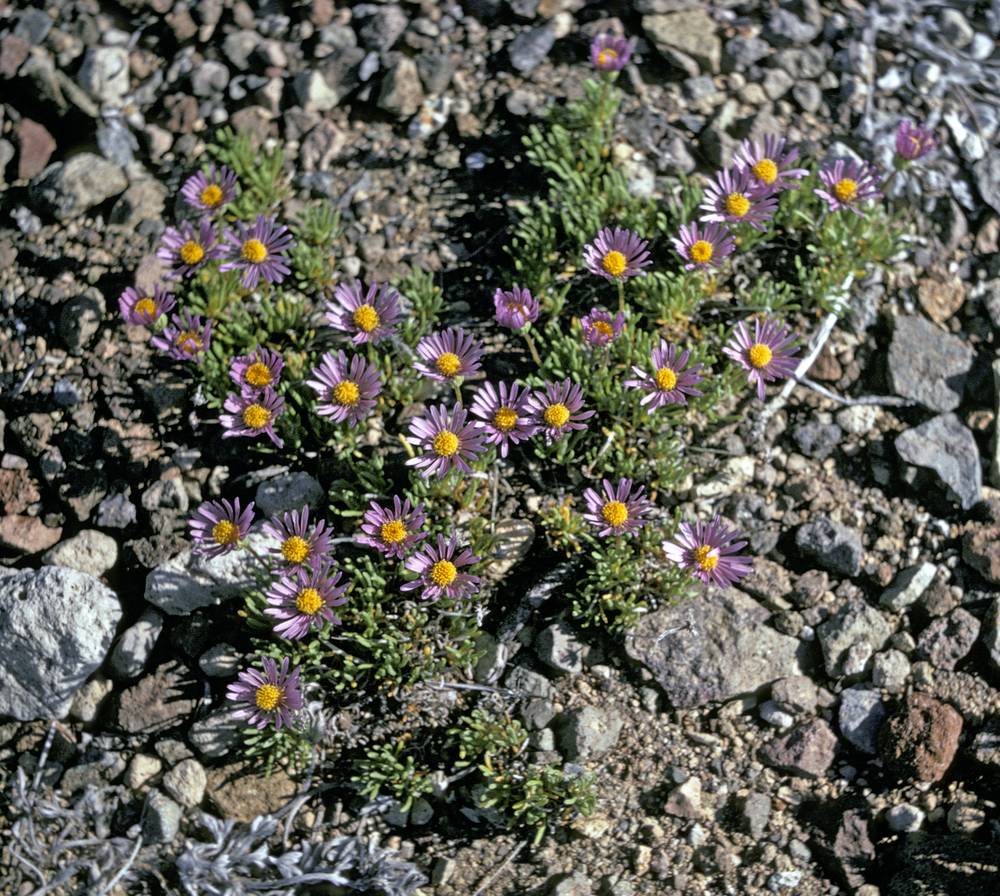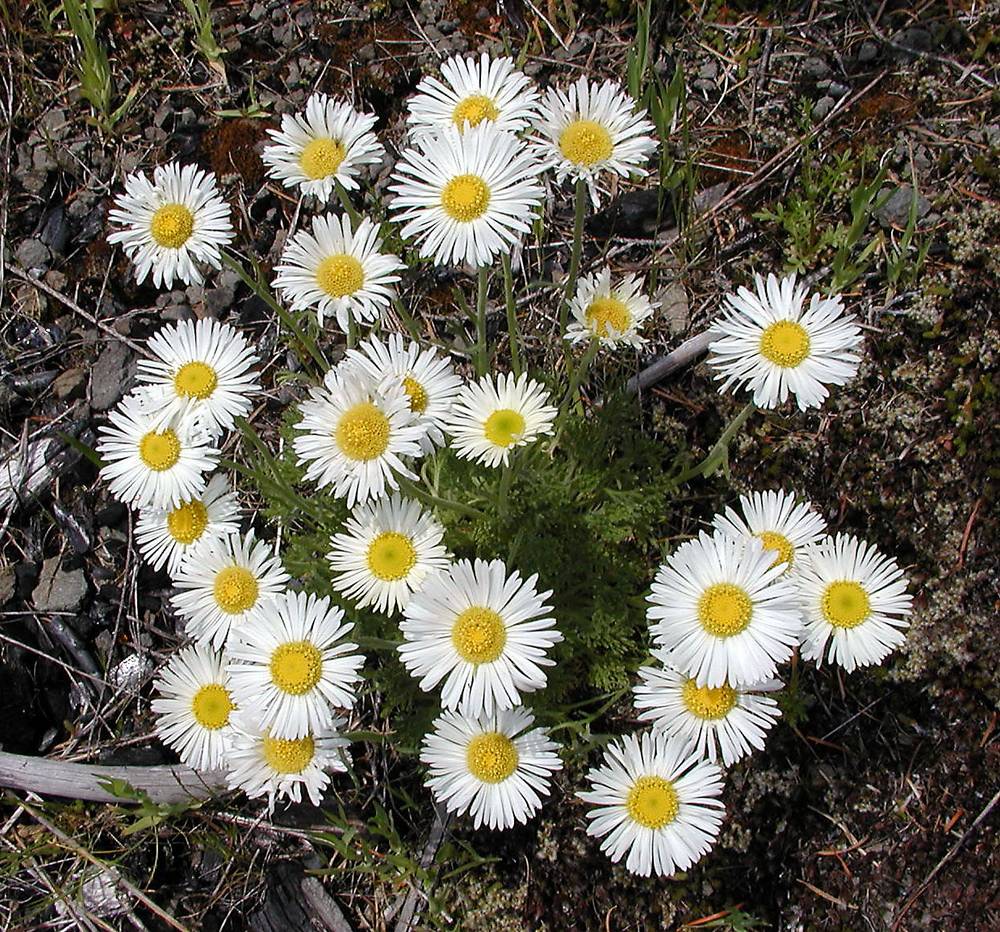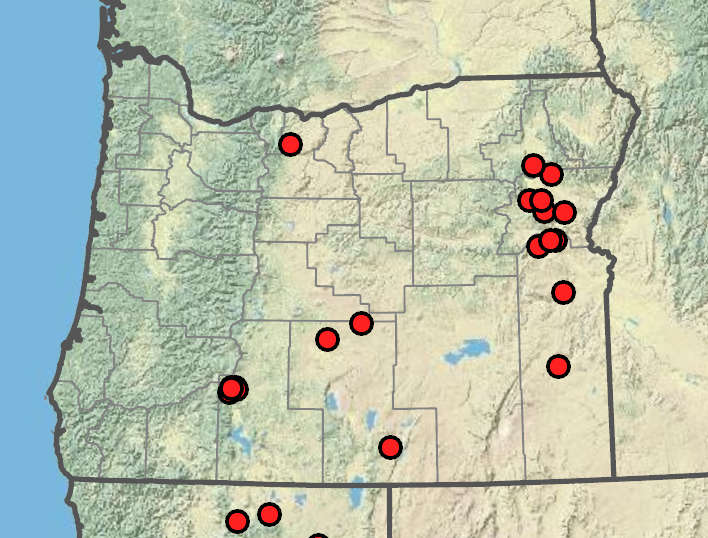Erigeron elegantulus
Erigeron compositus
dwarf blue fleabane, volcanic fleabane
cutleaf daisy, dwarf mountain fleabane, fernleaf fleabane
erect to basally ascending, sparsely to moderately strigose, eglandular.
erect, glabrous to sparsely hirsute and becoming more so distally, usually densely glandular.
persistent, linear to filiform, 20–50 × 0.5–1 mm, white, bases sheathing;
margins entire;
tips round to acute or acuminate;
surfaces sparsely to moderately strigose.
persistent, spatulate to obovate, 5–60 × 5–20 mm;
margins (1)2–3-ternately lobed or dissected;
surfaces moderately to densely strigose or hispid, usually minutely glandular.
abruptly reduced and usually restricted to basal ? of stem, bases sheathing.
5–20 × 1–2 mm, abruptly reduced to linear bracts.
3–5 × 8–11 mm.
2–8 × 6–18 mm.
15–30, lavender to purple;
rays 3–8 × 0.7–1.3 mm.
20–60+, sometimes missing or reduced to tubes, white to pink to purple;
rays 0–8 × 0–1.5 mm.
corollas 2.5–3.5 mm.
corollas 3–5 mm.
in 3–4 unequal series;
surfaces sparsely strigose, eglandular.
in 2–3 series, usually with dark purple or green medial area;
surfaces sparsely to densely hirsute, usually minutely glandular.
1–2 mm, nearly glabrous to sparsely strigose;
inner pappi of numerous barbellate bristles.
2–3 mm, densely strigose;
inner pappi of numerous barbellate bristles.
1, radiate.
1, radiate, sometimes disciform.
=27.
=18, 36, 45, 54.
Erigeron elegantulus
Erigeron compositus
Rocky areas, sagebrush, coniferous forests. Flowering Jun–Aug. 700–2500 m. BR, BW, Casc, Owy. CA. Native.
Rocky slopes, ridges. Flowering May–Sep. 600–3000 m. BR, BW, Casc, ECas, Owy, Sisk. CA, ID, NV, WA; north to AK, northeast to Greenland, east to SD, southeast to NM; Asia. Native.
Individuals with onceternately lobed leaves have been separated as variety glabratus, but there does not seem to be any geographic pattern to this classification. Polyploids are known within this species and reduction of rays is associated with increases in ploidy.
James Riser, Stephen Meyers
James Riser, Stephen Meyers
- Local floras:
BC,
CA,
OR,
WA
- Local Web sites:
CalFlora,
CalPhotos,
Flora NW,
PNW Herbaria,
Turner Photog.
WildflowerSearch
iNaturalist (observations)
USDA Plants Database
- LBJ Wildflower Center
- SEINet
- Plants of the World Online
- Encyclopedia of Life
- Wikipedia
- Google Image Search





